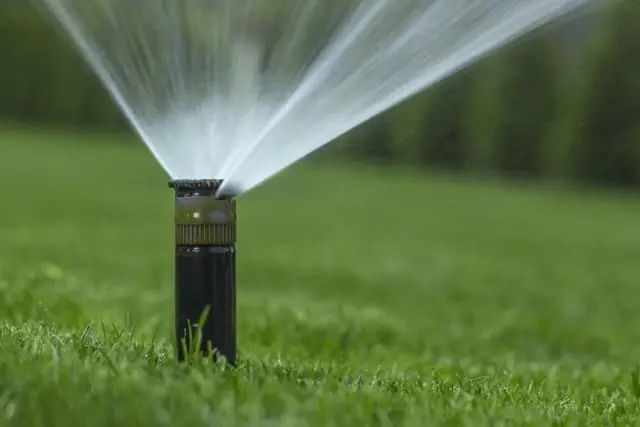How Do I Turn on My Sprinkler System in the Spring?

Shutting down your sprinkler system for the winter will keep water from freezing inside the pipes and ruining the system throughout the chilly time of year.
Doesn’t matter if you had a pro do it or you winterized your own system in fall, these simple easy steps will show you exactly how to turn on a sprinkler system for spring so you can start getting the grass and flowers some much-needed water.
Need additional assistance to get your Albuquerque sprinkler system going? Call us at ASAP Sands Outdoor Services to set up a spring sprinkler startup appointment.
Check for Damage
Before you begin the process of turning your sprinklers back on for the spring, you’ll need to inspect the system for weather damage. Carefully inspect each sprinkler’s head, as well as any exposed valves, or pipes, and repair and replace anything that is broken or cracked.
Find the Main Shutoff Valve
Sprinkler shutoff valves exist in the system’s valve boxes throughout the yard, the basement or the crawl space. Look for piping that will lead to a single shutoff ball valve or lever-type handle near the ground level inside and a cross-shaped handle outside — often far beneath the earth in a ground box or in a large pipe.
Tip
If you also see a big water pipe coming in well below ground or through a foundation wall, that is probably the main water supply for your home, not the sprinkler system’s valve.
Locate the Vacuum Breaker
Locate your system’s vacuum breaker fitting, which is generally above ground and near the house. This is a copper or plastic valve assembly to which two pipes are attached, one to each hose and each with a small shutoff valve.
Shut the Test Cocks of the Vacuum Breaker
The vacuum breaker will also have two test valves, known as test cocks, that resemble slotted screw heads. If you have winterized your system they will be at the 45’s from the nipples. Close each of the two test cocks using a common screwdriver, be sure the slot on the test cock is now perpendicular to the nipple.
Open the Shutoff Valves
Next, open wide two shutoff valves in the vacuum breaker (see the butterfly type handle). The valve handles, too, should have been left perpendicular to the pipe, just like the test cocks, for winterization. Turn the handle of each valve so it is parallel with the pipe to open each one fully.
Tip
Ball valves (manually operated, whether with screw-type control, lever-type handle or butterfly type handle), should be open when the slot of handle or control is parallel to the pipe. When the handle is at a 90 degree angle to the pipe, they’re fully closed.
Reinstall the Main Valve Bleeder Cap
Some system shutoff valves feature a small metal cap that threads a bleeder nipple on the side of the valve and allows any water remaining in the piping to drain out when the system is closed down. If there is one of these on your shutoff valve, ensure that the cap is in place and tight.
Slowly Open the Main Valve
If you turn the sprinkler system back on too soon, a water hammer may form, and break a fitting or blow a sprinkler head out.
So gradually open the main shutoff valve and admit water into the sprinkler system. For a ball valve, turn the lever handle so that it is parallel to the pipe and for an in-ground shutoff valve use a sprinkler valve key to turn the valve counterclockwise until it stops.
Run a Manual Test
Program your system’s timer or smart controller to cycle through each sprinkler zone manually, allowing for three to five minutes per zone.
When a zone activates, observe its sprinkler heads to ensure they are running correctly, and take note of any problems you observe. Don’t be alarmed to see the sprinklers sputtering and blowing out air when they start-up for the first time — this is to be expected and should stop after a minute or so.
Inspect the Valves and Vacuum Breaker
After the test, you should open every valve box in your yard and be certain there are no leaks. Inspect any vacuum breaker and any associated valves and piping, and the bleeder on the main shutoff valve (if any). If the cap is leaking, use a pair of pliers to lightly tighten it.
Get Ready to Irrigate
Fix any issues you discovered during your hand-check, such as by repositioning spray patterns or changing out broken sprinkler heads. Program the system timer for the very first watering, preferably one you can watch over to see if everything is working fine. After this initial watering, then you could set it up to water at night, or very early in the morning, so it is most efficient.
